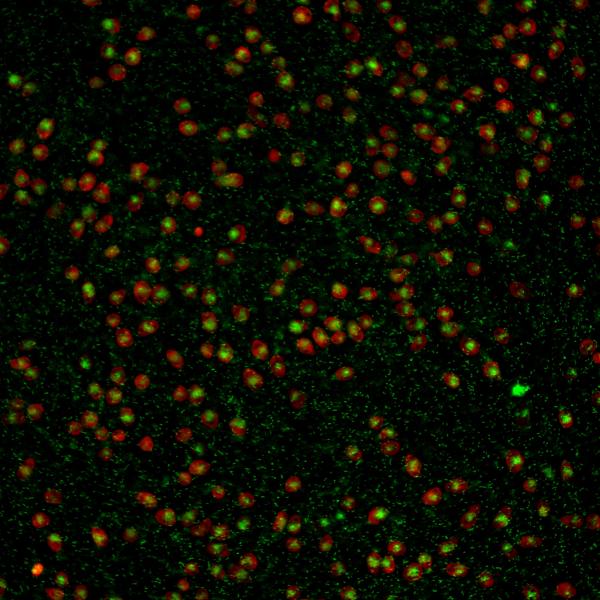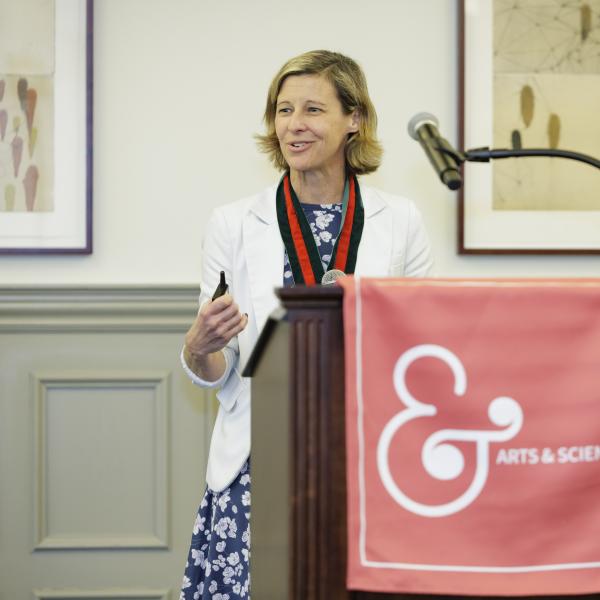Rebecca Lester uses her expertise in anthropology and social work to treat patients in her nonprofit therapy practice.
Through her research on eating disorders, religious conversions, and polyamory, Rebecca Lester has gained an intimate understanding of the complex relationship between cultural practice and personal development. For the professor of sociocultural anthropology, however, a theoretical understanding of the issues is not enough. In her highly personalized nonprofit therapy practice, she applies the lenses of both anthropology and social work to address the needs of her patients.
Recently, Lester, chair of the Department of Anthropology, sat down with the Ampersand to discuss her research on eating disorders, the healing potential of relationships, and how she built a community of selves.

What made you decide to pursue clinical work alongside your anthropological research, and how has that changed your perspective on mental health treatment?
Psychotherapy is something I’ve always wanted to do. When I was an assistant professor at WashU, I started doing research at an eating disorder clinic, and it reignited this desire in me to do something more hands-on than what I could do as an ethnographer. That’s when I decided to go back to school, get my master’s of social work, and do my clinical training.
I was able to see how our healthcare system constrains the kind of work clinicians can do. When you have an insurance company looking over your shoulder saying, “You have 10 sessions to get this done,” you can’t really give a client what they need. Now I have the luxury of working in a private practice, charging people whatever they can pay, and tailoring my treatment to each client. I do it because I’m passionate about it and because people need mental health care.
In 2019, you published the book “Famished: Eating Disorders and Failed Care in America.” What did you learn from writing that book, and how does it relate to your broader research interests?
If you trace the history of treatment and attitudes towards eating disorders, you very clearly see their ties to Victorian ideas about young women in distress, characterizing them as vain or manipulative. But the issue is so much more fundamental than trying to look like somebody on television. Fundamentally, people are dealing with what it means to materially exist in their bodies, in relationships, and in the world.
Those are the moments I investigate in my research — the ones where people think, “What am I doing here? What does all of this mean to me, or what can I make it mean?” Whether those moments happen because of an illness, a religious vocation, or a change in circumstance, they are really rich experiences to accompany people through.
In June, Scientific American published an article you wrote on your clinical work with a patient you called “Ella,” who struggled with dissociative identity disorder in response to childhood trauma. How did you use an anthropological lens to understand and treat Ella’s way of seeing the world?
When Ella started to present multiple selves, I didn’t automatically think it was pathological. Our specific cultural idea of the self — that we have a singular self with boundaries around it — is just one of many. There are cultures around the world that believe that we are an amalgam of different parts of our ancestors, community, spirits, or pieces of the divine.
What was problematic was that Ella’s selves were not communicating, and it was causing her difficulty in everyday life. So, I approached my work with Ella as an anthropologist of her inner world: trying to understand how her community of selves functioned, how it came to be the way that it was, and what was important to its different factions. And, like any anthropologist entering a community, I had to build trust and rapport before I was invited in.
Why was it important to work with Ella’s different selves instead of dismissing their existence?
With all my clients, I apply what psychologist Carl Rogers calls “unconditional positive regard.” The point is not to automatically believe everything the patient tells you is the absolute, objective truth, but to get as close as you can to understanding how the world appears to them. Ultimately, that is what both psychotherapy and anthropology try to do. If you can connect with someone without making negative assumptions about their behavior, you can see them as a person beyond the lens of a disorder.
There’s been a lot of research on different types of therapy and which ones are most effective. Again and again, these studies show that what makes the biggest difference is not the type of therapy, but the quality of the relationship between the therapist and client. Obviously, skills and techniques are important. But, fundamentally, it’s the relationship that heals people.



